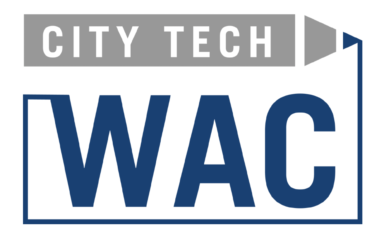Ideally, we want to introduce students slowly to the process of creating formal research papers. A research paper – or any formal paper for that matter – is a complex task that assumes a wealth of knowledge on the side of the student. What is an appropriate source? How to use evidence? Who is the intended audience the voice of the paper should be directed at? How to organize one’s thoughts? What is considered an appropriate thesis? All these, and many more, are questions students have to have tackled before they will be able to write a successful paper. It is because of the complexity that is inherent in each formal assignment that we will see better results when we break down assignments into smaller, doable tasks. Scaffolded assignments that break down larger formal assignments into small tasks help students to focus, and understand the smaller pieces a research paper is made of.
But what happens when we cannot scaffold an assignment to help students to write more successfully? Sometimes the constraints of the course curriculum do not allow us to break down assignments, sometimes we inherit a course, and do not have the time to make substantial changes to the course’s assignments, or we assign a paper that we think is doable to students only to find out later that we asked too much of our students. There are a few things we can do to help students write more successfully, to be more engaged in the process of writing, and to get more consistent results throughout:
Take 20 minutes of your class time to go over the assignment with your students. Many of the questions students deal with when writing a paper can be solved by a Q & A session in which students have the possibility to learn about their professor’s expectations. I find an in-class discussion much more fruitful than an email or office hour conversation with single students, as students will learn from each other while talking about the assignment. Some of the questions students have may be questions others would not have thought about, or were reluctant to ask. By going over the assignment together students will teach each other a valuable lesson on how to approach the writing of a research paper.
Be open to revisions. You may know this already but professors, too, can be terribly unclear and implicit. It is difficult to put yourself into the mind of an undergraduate student who is asked to perform the required task for the first time. We can learn from our students how to write clearer assignments by asking them to explain what parts of the assignment they find confusing, or unintelligible. I found students to be more engaged, and motivated about an assignment when I took into consideration their suggestions and revised the assignment I had given them. Apart from making the assignment clearer, and therefore more doable for my students they would learn another important lesson:
Ask your students to revise their own assignments before submitting them. Revision is one of the most essential parts of the writing process. It organizes the writer’s own thoughts, it turns a wild first draft into a piece that is comprehensible to others, it detects grammar and spelling errors, typos, and missing words. The practice of revision is at the very heart of the academic tradition. And yet, we fail to engrain the process of revision into our student teaching all too often. More than once did I expect my students to come up with a well-organized, error free, and thoughtful first draft. Boy, am I glad they never saw one of my first drafts. Ideally, we would want to assist our students’ efforts to develop a strong final draft by scaffolding the assignment and/ or have them submit multiple drafts that they then can revise (by peer reviewing each other for instance). But even if students have only one opportunity to submit their assignment they should take time to revise it; and since students are beginner writers they need instructions on how to do it. A good technique that is easy to perform is to read aloud the first draft. Ideally, students should find a listener who can give feedback. But even without somebody else present reading aloud will help to detect errors. This is a particularly good exercise for students whose first language is not English, and who might find it easier to hear mistakes rather than reading them. The instructions on how to revise their essays should be part of the assignment sheet, and talked about in class. If class time permits, instructors may also want students to bring in their assignments, read them to each other in class, take notes, and revise them later at home based on the assignment’s instruction, and possibly grading rubrics. Which brings me to my next point:
If you use grading rubrics, give them to your students along with the assignment. It is much easier for students to perform a good job when they know what is expected of them. Personally, I use “checklists” that tell students what is expected of them in each part of the assignment (introduction, methods, and results section) instead of traditional grading rubrics. Again, students are at a beginner stage when it comes to producing written work that is research based, and they benefit tremendously from clear guidelines that lay out what is expected of them.
A final option to consider, particularly when your discipline requires students to write similar assignments, such as lab reports, multiple times, is to focus only on one aspect of the assignment rather than the entire assignment. In some cases scaffolded assignments may not seem feasible, and students are required to produce complete assignments all at once. In that case, you may want to consider focusing only on one aspect of the assignment per cycle. Let’s say your students have to submit 12 lab reports in your course each semester. You can have them write 12 reports, but in your grading feedback focus on one aspect for each lab report. By focusing on only parts of the assignments (such as the introduction, the formatting, results section, and so on) students will think more deeply about the requirements, and complexities of each section, and you, on the other hand, can pay more attention to the details of each section in your feedback. At the end of the course, students will be able to write an entire paper more easily, and with more consistent results.
These are only a few of many “quick fixes” that can be used when assigning papers to students, and that will help students to become better writers, and scholars. The fixes offered are largely based on the principles of Writing Across the Curriculum, as well as personal teaching experience at various CUNY campuses.




